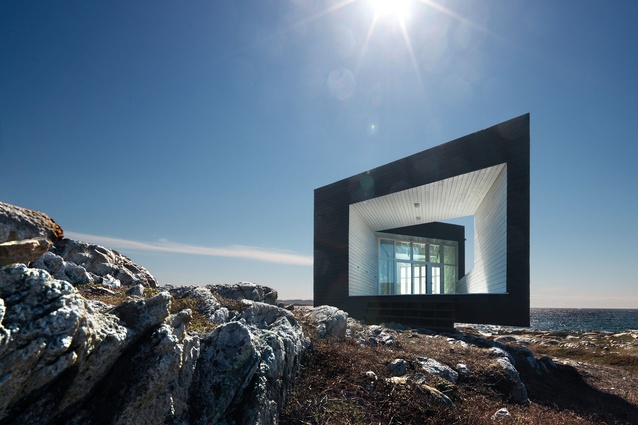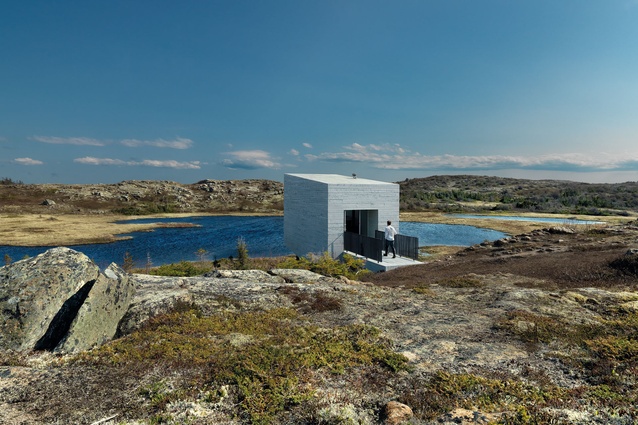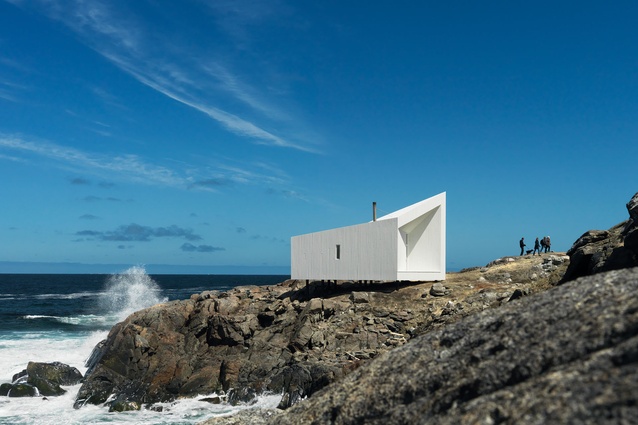Hot House: Fogo Island
In the mid-1990s, Fogo Island found its fishing and boat-building industries on the brink of collapse. Its people were emigrating en masse and the 238km², rugged outpost of Newfoundland, Canada, was struggling.
Today’s financial crisis prescription would call for a good dose of infrastructure to cure Fogo’s ills: build a road or two, take care of the factories which keep people employed and inspire folks to shop, and the invisible hand of the market should do the rest. But in Newfoundland, the locals decided to do things differently. Zita Cobb, who had left the island as a teenager and made a fortune in Silicon Valley, returned at age 43 to found Shorefast, a private charitable foundation that puts the arts at the forefront of its efforts to revitalise the area. Its vision was to focus on local creativity, engage Fogo’s intellectual capital and make the most of the uniqueness of the geography. Sustainable fishing, micro-financing and eco-tourism were added to complete the master plan.
“Zita put out an ad for architects wanting to come and build here but the majority turned out to be wankers,” says Canadian-born, Norway-based architect Todd Saunders. “When she read my name in some list of the 100 most influential Canadians and she realised I was a Fogo native, she knew I was the one.”
Saunders was asked to build four artists’ studios funded by a mix of her own money and public and private grants. They would accommodate visiting creatives (New Zealand’s Kate Newby – winner of the Walters Prize in 2012 – has been there twice) and also there would be a five-star inn. (The latter was completed in June 2013 and is on Travel + Leisure’s most recent list of best new hotels around the world.
“The islands have great music and literature but had nothing new in architecture,” says Saunders. “I very much wanted to imagine what new Newfoundland architecture would look like. There were three requirements for each of the studios: light from the North; a sheltered, outdoor working area; and a large studio space inside.”
The resulting structures follow the Newfoundland tradition of putting buildings on stilts. The forms, however, are entirely experimental and unashamedly sculptural. A focus on locally sourced materials and workmanship meant traditional timbers were bound by carpentry joints that the local boat-building industry has been using for centuries.
The first and largest studio to go up was Long Studio in 2010. At 120m², the place juts from the volcanic rocky beach. It’s composed in a simple, low-lying, rectangular geometry, emphasised by an elegant and imposing black envelope, and its interior lining of whitewashed spruce is almost magnetic from afar. The building ends in a wall of glass pointing at the Atlantic Ocean. There is a small upper loft and an almost-insolent amount of light.
The other three – called Bridge, Tower and Squish in honour of their most obvious characteristics – were built in 2011. Squish’s trapezoid form and the fractured symmetry of the Tower Studio are particularly outstanding; Tower’s photogenic façade has been used by Apple in promotional material for the latest iPhone.
When asked which is his favourite, the architect was quick to point out the reception his work has had.
“Squish has been the most praised,” Saunders says. “With Bridge, I feel I really hit it on the nose in terms of what new Newfoundland construction can be. It is simple, there is no arrogance to it and you can feel the materials from a distance.”
All four spaces are populated for most of the year and for varying periods of time. Artists have included Oliver Lutz and Hannah Rickards and photographer Edgar Leciejewski, as well as editorial designers and film-makers.
Have the studios had an impact, then, on Fogo? Saunders, who has been in discussions with a New Zealand film-maker to, potentially, design a residential project in post-earthquake Christchurch, believes the social impact is latent. The studios are scattered around the island and the walk to and from the residences (heritage buildings on the island) has created arteries of knowledge that take the artists into the homes of locals. The cultural exchange has proven to be re-invigorating.
It has also helped revitilise the island’s ailing economy, according to a piece written by John Crosbie in Newfoundland’s The Telegram: “The renaissance of this rural community has been successful by adding to a sustainable economy in ways that complement its 400-year-old history: by incorporating and celebrating local values, traditions and cultures.”














